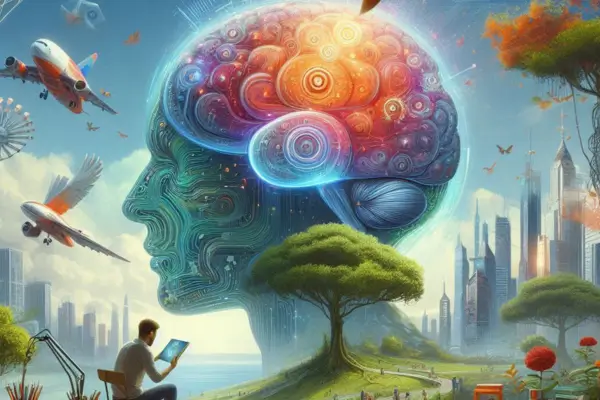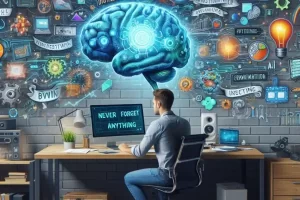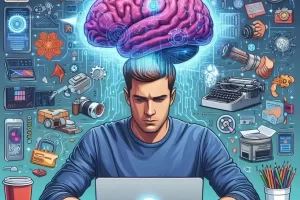We all make decisions every day — from small daily choices to life-changing ones. But without structure, most decisions are made on impulse, emotion, or incomplete information. That’s where a second brain, supported by artificial intelligence (AI), becomes a powerful ally.
By capturing past decisions, analyzing options, and providing clarity, your second brain can help you make smarter, faster, and more confident decisions — consistently.
In this article, you’ll learn how to use your second brain and AI to build a personal decision-making framework that supports better thinking, fewer regrets, and more aligned action.
Why Decision-Making Needs a System
Most people:
- Don’t document or review past decisions
- Repeat the same mistakes
- Rely on feelings instead of data
- Get stuck in indecision or second-guessing
Without a system, decisions drain energy. With a second brain and AI:
- You clarify your choices
- Compare options with structure
- Learn from the past
- Reduce stress and uncertainty
- Move forward with confidence
Create a Decision Log in Your Second Brain
Start by setting up a Decision Log — a simple database or note structure to record key decisions.
Include fields like:
- 🧠 Decision description
- 📆 Date made
- 🎯 Context or goal
- ✅ Options considered
- 📊 Pros and cons
- 🤔 Reasoning behind the choice
- 📍 Outcome (later reflection)
Use it for:
- Business strategy
- Career moves
- Big purchases
- Hiring decisions
- Personal or creative goals
Let AI assist:
“Summarize the context of this decision and extract the key variables.”
“What was my main reason for choosing option A over B?”
“How did this decision align with my long-term goals?”
Use AI to Weigh Options and Reveal Blind Spots
AI can act as a neutral thought partner to:
- List alternatives
- Compare options logically
- Detect cognitive biases
- Challenge your assumptions
- Highlight missing data
Prompt examples:
“Help me evaluate these three options for launching my product.”
“What are the potential second-order consequences of this choice?”
“Am I showing confirmation bias or sunk-cost fallacy here?”
“Compare option A and B based on effort, impact, and risk.”
Now your decision-making is less reactive and more reflective.
Build a Personal Decision Template
Create a template in your second brain to follow each time you face a meaningful decision.
Template sections might include:
- What decision am I facing?
- Why does it matter now?
- What are my options?
- What are the risks and rewards?
- What do I know? What don’t I know?
- What would my future self recommend?
- What’s the worst-case scenario?
Use AI to fill it in:
“Based on this situation, fill out my decision-making template.”
“Act as my future self — what would you advise me to do here?”
“Turn my brainstorming into a structured pros and cons list.”
Analyze Past Decisions and Learn
Your decision log becomes a goldmine of insight — if you review it.
Set a monthly or quarterly reminder to ask AI:
“Which decisions from the last 3 months had the best outcomes?”
“What patterns do I notice in my good vs. bad decisions?”
“When did I delay making a decision too long?”
“What values consistently guided my best choices?”
Over time, this feedback loop improves your intuition and strategy.
Tag each decision with:
Use Decision Tags and Knowledge Links
- 🏷 Related life or business area (Health, Work, Finances)
- 🧩 Project or goal it connects to
- 🧭 Value alignment (e.g. Freedom, Growth, Simplicity)
- ⏱️ Time horizon (Short-term, Long-term)
This lets you filter later:
- “Show all decisions related to my business growth.”
- “Review career choices made in the last 6 months.”
- “What patterns appear in decisions related to relationships?”
AI can help generate these tags based on your decision entries.
Reflect Before and After Major Decisions
AI can help guide you through reflection — both before and after you decide.
Before:
“What’s at stake in this decision?”
“Am I choosing from fear, pressure, or alignment?”
“What would I advise a friend in this situation?”
After:
“What worked or didn’t work in this outcome?”
“What assumptions proved true or false?”
“What will I do differently next time?”
This builds decision wisdom, not just more data.
Automate Reminders and Reviews
Use AI or calendar integrations to:
- Revisit key decisions after 30/60/90 days
- Prompt a quarterly review of all decisions
- Generate summaries and insights automatically
Example prompts:
“What were the top 5 decisions I made this quarter?”
“Which decisions had unexpected outcomes?”
“Remind me to check the outcome of this choice in 3 weeks.”
You stay in touch with your choices — and grow from every one.
Real-Life Example: The Strategic Creator
Let’s say you’re a freelancer or creator making decisions about:
- Client projects
- Pricing models
- Business direction
- Personal time and focus
With your second brain:
- You record and structure each major decision
- Use AI to compare paths and predict outcomes
- Reflect on what worked, what didn’t, and why
- Build a growing archive of personal strategy patterns
- Develop a clear sense of how you make your best choices
Now your business — and life — runs with more clarity, control, and confidence.
Final Thoughts: Think Clearly. Choose Wisely. Learn Always.
Good decisions don’t come from luck or IQ. They come from clear thinking, structured reflection, and learned experience.
Your second brain and AI give you:
- A place to slow down and think
- A way to track and analyze your decisions
- A guide to help you see what you can’t see alone
You already have the answers — or the ability to find them. Build the system to support that.
Capture. Compare. Decide. Reflect. Grow.




